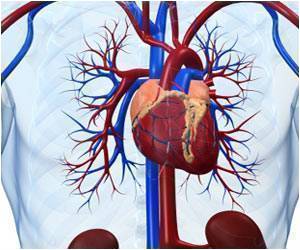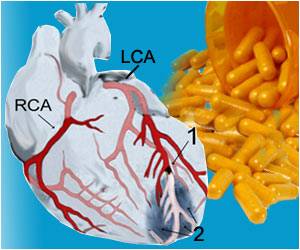A US retrospective analysis revealed that a new stress test protocol was found to be diagnostically safe.

Single-photon emission computed tomography (SPECT) myocardial perfusion imaging (MPI) has been used for over 30 years to detect ischemia in patients with suspected CAD. In SPECT MPI patients are injected with radioactive agents (such as Tc-99m or Thallium 201) whose passage through the heart is viewed with a SPECT camera. By comparing the heart's blood flow at rest and during stress (patients exercise on a treadmill, cycle ergometers or undergo pharmacological stress with vasodilators or dobutamine), cardiologists can determine if the myocardium receives sufficient blood supply, as well as the location and extent of underlying CAD.
"Because it's non invasive and many patients with a chest pain syndrome don't have coronary disease, SPECT MPI is often viewed as a 'gate keeper' to coronary angiography," explained Lane Duvall, an investigator in the study.
While SPECT MPI represents a well established technique, the main disadvantage is that patients are exposed to diagnostic levels of radiation. In recent years intensive efforts have been made to reduce ionizing radiation associated with cardiac imaging due to concerns that it damages DNA in cells and may ultimately give rise to cancer. Indeed, extrapolating data from the survivors of the Hiroshima and Nagasaki atomic bombs, Andrew Einstein, from Columbia University Medical Center, New York, has estimated that the low levels of radiation encountered during medical imaging might lead to a 2% excess relative risk for future cancers.
Other studies have suggested that exercise treadmill testing alone may be sufficient to predict CVD outcome without use of SPECT MPI in low risk patients. In 2011, Bourque and colleagues from the University of Virginia, Charlottesville, reported that patients who exercise at >10 metabolic equivalents (METS), [the unit used to estimate the amount of oxygen used by the body during physical activity] during stress testing had a very low prevalence of significant ischemia and very low rates of cardiac events during follow-up².
The advantage of exercise treadmill testing is that it offers a quicker study that involves no radiation exposure, with prognostic information provided via a variety of treadmill scores, most notably the Duke Treadmill score. "This has led to investigators questioning the added value of SPECT MPI over exercise testing alone. There's growing recognition that patients need to be treated as individuals and that those in whom the CVD risks are considered negligible shouldn't be undergoing the risks of radiation exposure," said Duvall.
Advertisement
Subjects were divided into those who would have met all the criteria for not undergoing SPECT MPI (the No injection group n= 1,561 [29.2%]) and those who met the criteria for undergoing SPECT MPI (the Yes injection group, n=3,791, [70.8%]). For the study the criteria laid down for patients considered eligible for not undergoing SPECT MPI included achieving a maximal predicted heart rate >85%, > 10 METs of exercise, no symptoms of chest pain or significant shortness of breath during stress, and no ECG changes (ST depression or arrhythmia). Outcomes for the two groups at five years were then compared based on their actual myocardial perfusion imaging results and all-cause mortality that had been retrospectively identified from the National Death Index.
Advertisement
"Withholding isotope injections in these selected patients was found to be diagnostically safe with a small percentage of 'missed' abnormal perfusion studies, a very low rate of significant stress perfusion defects and left ventricular ischemia, and a prognosis which was better than their counterparts who were injected with the isotope," said Duvall.
Eliminating the need for imaging in 6% of the 9 million SPECT MPI studies performed annually in the US, the authors added, would result in significant cost savings and the total test time would be halved from three hours to roughly one hour. "There's a need to accept that less can be more. By individualizing therapy we can reduce radiation exposure and costs without jeopardizing the quality, the diagnostic utility or missing something important," said Henzlova.
Source-Eurekalert










